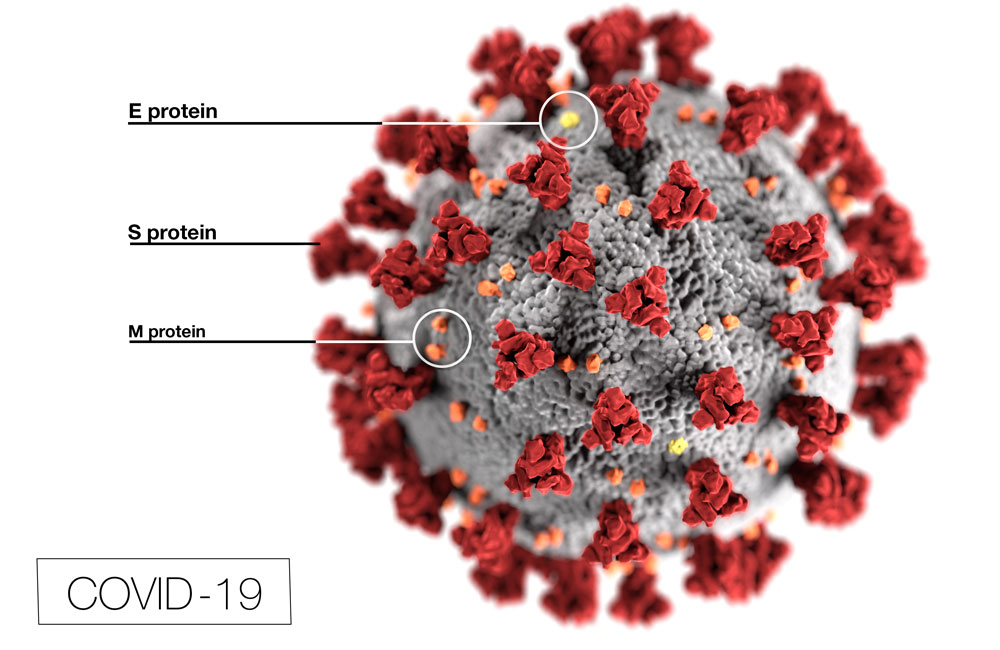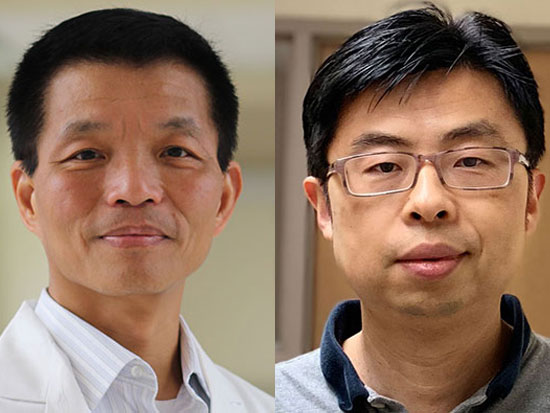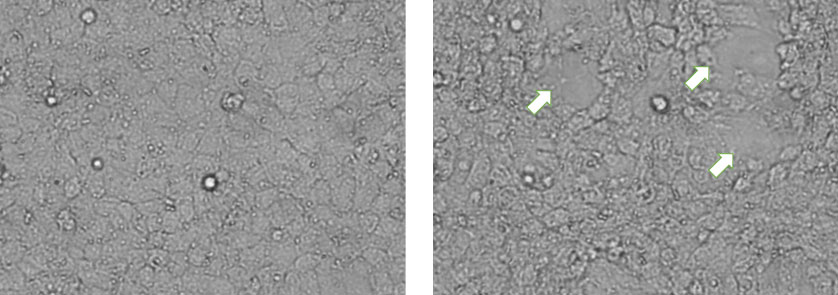 Spikes, in red and labeled "S protein" in this image of SARS-CoV-2 from the Centers for Disease Control and Prevention, interact with ACE2 receptors to gain entry into cells. By blocking the ACE2 receptors, SARS-CoV-2 indirectly creates fluid leakage in the lungs that is a primary cause of the breathing problems known as acute respiratory distress syndrome.
Spikes, in red and labeled "S protein" in this image of SARS-CoV-2 from the Centers for Disease Control and Prevention, interact with ACE2 receptors to gain entry into cells. By blocking the ACE2 receptors, SARS-CoV-2 indirectly creates fluid leakage in the lungs that is a primary cause of the breathing problems known as acute respiratory distress syndrome.
Protruding from the outer shell of SARS-CoV-2, the virus that causes COVID-19, are somewhere between 20 and 40 spikes. These proteins act as keys. The locks they are hoping to pick are the angiotensin converting enzyme 2 (ACE2) receptors on the outer walls of cells in the lungs, heart and other organs. When the SARS-CoV-2 spike protein binds to an ACE2 receptor, the virus can infiltrate the cell and start making copies of itself. This is not the only negative consequence. With SARS-CoV-2 attached, the ACE2 receptors can't carry out their main job, which is to convert the hormone angiotensin II into angiotensin (1-7). Angiotensin II is a vasoconstrictor, causing the walls of blood vessels to contract and increasing blood pressure. Angiotensin (1-7), by contrast, is a vasodilator, which opens blood vessels and lowers blood pressure.
 Songwei Wu, M.D., and Zhen Zheng, M.D., received funding from UAB's urgent COVID-19 research grants program to test their hypothesis that the drug penehyclidine can prevent lung injury induced by spike proteins on SARS-CoV-2, the virus that causes COVID-19.When a cell's ACE2 receptors are occupied by SARS-CoV-2, levels of angiotensin II surrounding that cell go up, which leads to increased calcium entry into that cell. This is particularly problematic in the small airways of the lung, where pulmonary microvascular endothelial cells (PMVECs) rely on precise control of gas and fluid exchange between the lungs and bloodstream for normal breathing. Higher calcium levels make the walls of the PMVECs more permeable, so fluid leaks out of the cells into the surrounding extracellular spaces. This is a primary cause of breathing problems, including acute respiratory distress syndrome (ARDS), seen in patients with severe cases of COVID-19. Up to 30% of patients with COVID-19 will develop ARDS.
Songwei Wu, M.D., and Zhen Zheng, M.D., received funding from UAB's urgent COVID-19 research grants program to test their hypothesis that the drug penehyclidine can prevent lung injury induced by spike proteins on SARS-CoV-2, the virus that causes COVID-19.When a cell's ACE2 receptors are occupied by SARS-CoV-2, levels of angiotensin II surrounding that cell go up, which leads to increased calcium entry into that cell. This is particularly problematic in the small airways of the lung, where pulmonary microvascular endothelial cells (PMVECs) rely on precise control of gas and fluid exchange between the lungs and bloodstream for normal breathing. Higher calcium levels make the walls of the PMVECs more permeable, so fluid leaks out of the cells into the surrounding extracellular spaces. This is a primary cause of breathing problems, including acute respiratory distress syndrome (ARDS), seen in patients with severe cases of COVID-19. Up to 30% of patients with COVID-19 will develop ARDS.
Fluid leakage, known as extravasation, from PMVECs plays a role in many instances of acute lung injury. Research by Songwei Wu, M.D., associate professor in the Department of Anesthesiology and Perioperative Medicine, and Zhen Zheng, M.D., an instructor in the department, has focused on the activity of a protein called regulatory myosin light chain (MLC2), which is phosphorylated (altered) in response to rising calcium levels. MLC2 helps maintain the barrier function of endothelial cells, and Wu and Zheng have identified what they believe to be a unique signaling complex between calcium and MLC2 that leads to greater permeability. The researchers also identified a way to interfere with that signal: a drug called penehyclidine, which has demonstrated beneficial effects against acute lung injury in several studies.
Those findings led to a new project funded by the second round of urgent COVID-19 research grants from UAB. Wu and Zheng are co-principal investigators for the project, titled “Penehyclidine protects lung from SARS-CoV-2-induced endothelial barrier disruption via limiting MLC2 phosphorylation - A novel intervention to ARDS in COVID-19.”
| “The present study may shed light on the molecular mechanisms underlying the pathogenesis of ARDS in critically ill SARS-CoV-2 infected patients and on identification of new therapeutic strategies.” |
As a first step, the researchers will test their hypothesis that Angiotensin II-activated calcium entry into PMVECs promotes phosphorylation of MLC2, with the end result being increased permeability of endothelial cells and the formation of gaps between cells through which fluid can leak out. Then they will test the hypothesis that penehyclidine can decrease this phosphorylation and prevent spike protein-induced acute lung injury.
There are no effective therapeutic treatments available for ARDS, the researchers note, except for mechanical ventilation, which has not been shown to improve patient mortality rates significantly. A before-and-after image shows gap formation (marked by arrows at right) of PMVEC cells in monolayer after stimulation by the novel signaling mechanism identified by Zheng and Wu. Image courtesy Zhen Zheng, M.D.
A before-and-after image shows gap formation (marked by arrows at right) of PMVEC cells in monolayer after stimulation by the novel signaling mechanism identified by Zheng and Wu. Image courtesy Zhen Zheng, M.D.
"We chose penehyclidine because it appeared to exhibit multiple anti-inflammatory and lung-protective effects in several clinical studies and animal models of acute lung injury in the past," Zheng said. Penehyclidine is an anticholinergic drug that blocks the action of the neurotransmitter acetylcholine. It is not FDA-approved for clinical use in the United States at this point, but it is "used widely in China as an anesthetic premedicant to reduce upper airway secretions," Zheng said. An advantage of penehyclidine over other anticholinergic drugs used to block saliva production, such as atropine, "is that it has fewer M2 muscarinic acetylcholine receptor-associated cardiovascular side-effects," Zheng said.
“The present study may shed light on the molecular mechanisms underlying the pathogenesis of ARDS in critically ill SARS-CoV-2 infected patients and on identification of new therapeutic strategies,” Wu and Zheng write in their project proposal. “If the outcomes are as anticipated, we will conclude that by penehyclidine protects lungs from alveolar barrier disruption caused by coronavirus S-proteins via regulation of MLC2 activity.”
